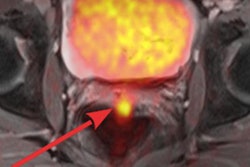
Ultrasound can help characterize ovarian masses -- specifically simple cysts versus complex ones -- which can then help physicians predict a woman's risk of ovarian cancer and avoid unnecessary surveillance, according to a study published online November 12 in JAMA Internal Medicine.
The study findings could help women avoid ongoing follow-up of simple cysts, which can prompt unnecessary biopsies and specialty referrals, wrote a team led by Dr. Rebecca Smith-Bindman of the University of California, San Francisco.
"Historically, surgical exploration and resection of all identified ovarian masses represented the standard of care, and as many as 5% to 10% of women have undergone a surgical procedure for a suspected ovarian [mass]; most of these procedures did not diagnose cancer," the authors wrote.
Increased use of transvaginal pelvic ultrasound has led to the identification of more ovarian masses, and the standard of care has been to biopsy them. But most ovarian masses are benign, Smith-Bindman's team noted. So the group explored whether ovarian cancer risk could be quantified with ultrasound according to the characteristics of the masses.
"We sought to identify features predicting with a high level of certainty that an ovarian mass is benign and thus does not require surveillance," they wrote.
The study included 72,093 women who underwent pelvic ultrasound between January 1997 and December 2008. The team analyzed the data in April 2017. Out of the total study cohort, 210 women were diagnosed with ovarian cancer. Forty-nine of these women were younger than 50, and 161 were 50 years or older.
The most common finding in women with ovarian cancer was a complex cystic mass, identified in 63.3% of those younger than 50 and in 55.9% of those 50 and older. In fact, having a complex cystic mass increased by eightfold the likelihood of cancer in women across both age groups, the researchers wrote.
"Women with complex cysts or solid masses have elevated relative risk of ovarian cancer, whereas women with simple cysts have low relative risk of ovarian cancer," the authors wrote.
Clinicians have justified the surveillance of simple cysts because ovarian cancer has a high mortality rate and tends to present as a cystic disease on ultrasound, Smith-Bindman and colleagues noted. But while surveillance may not seem harmful, it can trigger unnecessary imaging, false-positive results, overdiagnosis, and unnecessary surgery, the authors wrote.
"Given the high prevalence of simple cysts, their lack of association with ovarian cancer, and no elevated risk compared with women with normal ovaries, incidental and asymptomatic simple cysts should be considered normal and frequent findings in women of any age and ignored," they concluded.



















